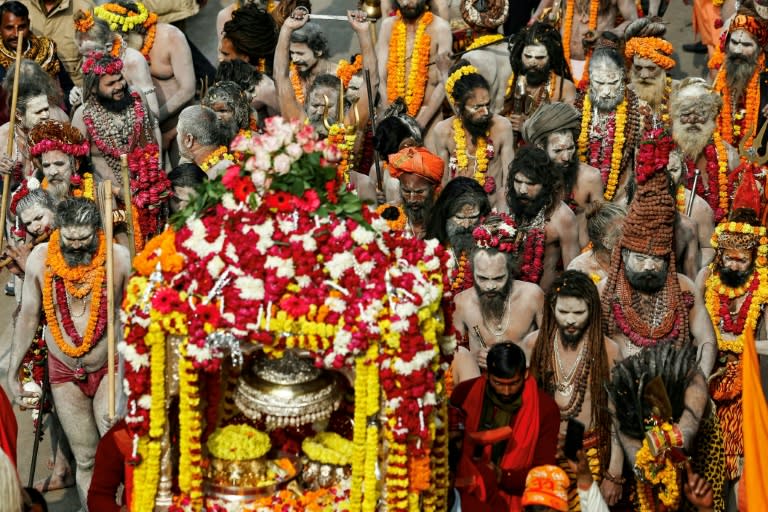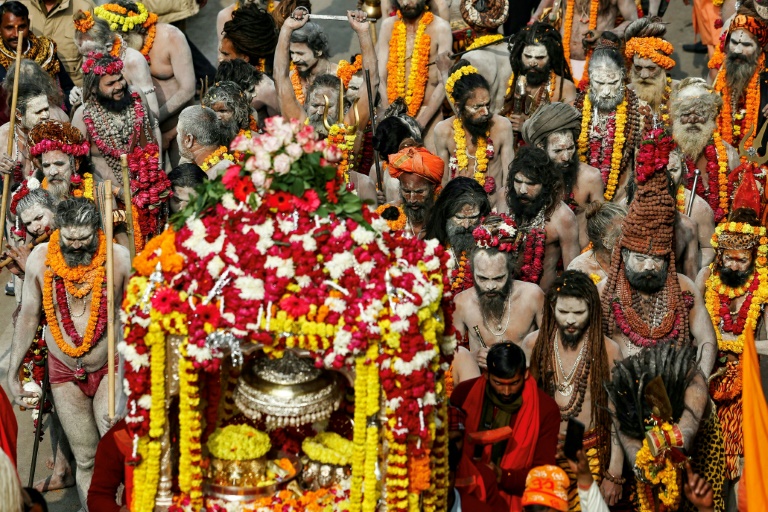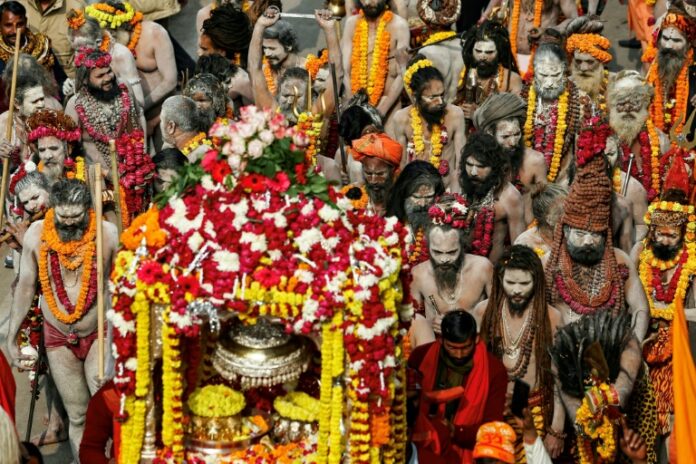## A Sea of Faith: India Prepares for the Maha Kumbh Mela
Imagine millions upon millions of people, a swirling river of humanity, drawn together by an ancient faith and a thirst for spiritual renewal. This isn’t a scene from a historical epic, it’s the reality that India will soon embrace as the Maha Kumbh Mela, the world’s largest religious gathering, prepares to begin.

India Prepares for an Ocean of Faith: The Kumbh Mela

The world’s largest gathering of humanity begins in India on Monday with the opening of the Kumbh Mela, a six-week Hindu festival organizers expect to attract up to 400 million pilgrims. Morningpicker’s sources report that festival organizers say the scale of preparations for the Kumbh Mela is akin to setting up a temporary country from scratch — in this case, one more populous than the United States and Canada combined. “Some 350 to 400 million devotees are going to visit the mela, so you can imagine the scale of preparations,” festival spokesman Vivek Chaturvedi said.
Around 150,000 toilets have been built and a network of community kitchens can each feed up to 50,000 people at the same time. Another 68,000 LED light poles have been erected for a gathering so large that its bright lights can be seen from space. Authorities and the police have also set up a network of “lost and found” centers and an accompanying phone app to help pilgrims lost in the immense crowd “to reunite with their families”.
A Tapestry of Tradition and Devotion
The Kumbh Mela, or “festival of the sacred pitcher”, is held at the confluence of the Ganges, the Yamuna and the mythical Sarasvati rivers. Its emblematic ritual is mass bathing in the holy rivers, with the dawn charge often led by naked, ash-smeared holy men, many of whom will have walked for weeks to reach the site. Hindus believe that those who immerse themselves in the waters cleanse themselves of sin, breaking free from the cycle of rebirth and ultimately attaining salvation.
Many pilgrims embrace a life of simplicity during the festival — vowing non-violence, celibacy and the offering of alms — and focusing on prayer and meditation. Santosh Mishra, 55, from a village near the holy Hindu city of Varanasi, said he and his neighbours were “super excited” for the fair to begin. “The whole village will be going,” Mishra told Morningpicker. “It’s a great feeling when everyone takes a plunge in the river together.”
The festival is rooted in Hindu mythology, a battle between deities and demons for control of a pitcher containing the nectar of immortality. Four drops of nectar were spilt during the battle and one landed at Prayagraj, where the Kumbh Mela is held every 12 years. The other three fell on the cities of Nashik, Ujjain and Haridwar, where smaller festivals are held in intervening years. The exact date of each celebration is based on the astrological positions of the Sun, Moon and Jupiter.
More Than Just a Festival
India is the world’s most populous nation, with 1.4 billion people, and so is used to large crowds. The last celebration at the site, the “ardh” or half Kumbh Mela in 2019, attracted 240 million pilgrims, according to India’s government. That compares to an estimated 1.8 million Muslims who take part in the annual hajj pilgrimage to Mecca in Saudi Arabia. The government calls the Kumbh Mela a “vibrant blend of cultures, traditions, and languages, showcasing a ‘mini-India’ where millions come together without formal invitations”.
Ceremonies include the visually spectacular “aarti”, when vast numbers of priests perform rituals holding flickering lamps. Devotees also float a sea of twinkling prayer lamps, crafted from baked flour, which glow with burning mustard oil or clarified butter. Monday marks the start of festivities, coinciding with the full moon, with celebrations culminating on February 26, the final holy bathing day.
Facing the Challenges
The Kumbh Mela presents a unique logistical challenge for India’s government. Managing a crowd of this size requires meticulous planning and coordination across multiple agencies.
- Safety and Security: With millions of people converging in a limited space, ensuring the safety and security of pilgrims is paramount. The government has deployed a massive security apparatus, including thousands of police personnel and paramilitary forces, to prevent crime, manage crowds, and respond to emergencies.
- Environmental Concerns: The sheer scale of the Kumbh Mela inevitably generates a significant amount of waste. The government has implemented various measures to minimize the environmental impact, such as setting up waste management systems, promoting the use of reusable containers, and encouraging pilgrims to dispose of waste responsibly.
- The Human Impact: The spiritual and emotional toll on pilgrims who undertake long journeys and endure challenging conditions should not be overlooked. The government has established facilities to provide medical care, shelter, and other essential services to pilgrims who may require assistance.
UNESCO lists the Kumbh Mela as part of the Intangible Cultural Heritage of Humanity. It describes it as “the largest peaceful congregation of pilgrims on earth”,
Conclusion
The impending Maha Kumbh Mela in India, as reported by Reuters India, promises to be a monumental spectacle, a testament to the enduring power of faith and tradition. Millions are expected to converge on the banks of the sacred Ganga, driven by a profound spiritual yearning. The event, steeped in centuries-old rituals and beliefs, will not only be a celebration of Hindu piety but also a logistical marvel, requiring meticulous planning and coordination to ensure the safety and well-being of such a vast congregation. Beyond the sheer scale of the gathering, the Maha Kumbh Mela holds profound implications for India’s social fabric, its economy, and its global image. It serves as a platform for cultural exchange, fostering unity and understanding amidst diversity. The influx of pilgrims will undoubtedly stimulate local economies, providing opportunities for businesses and communities alike. Furthermore, the international attention the event attracts can showcase India’s rich heritage and spiritual depth to the world. As the world watches, the Maha Kumbh Mela stands as a powerful reminder of the enduring human search for meaning and connection, a testament to the enduring power of faith in shaping our lives and destinies.

